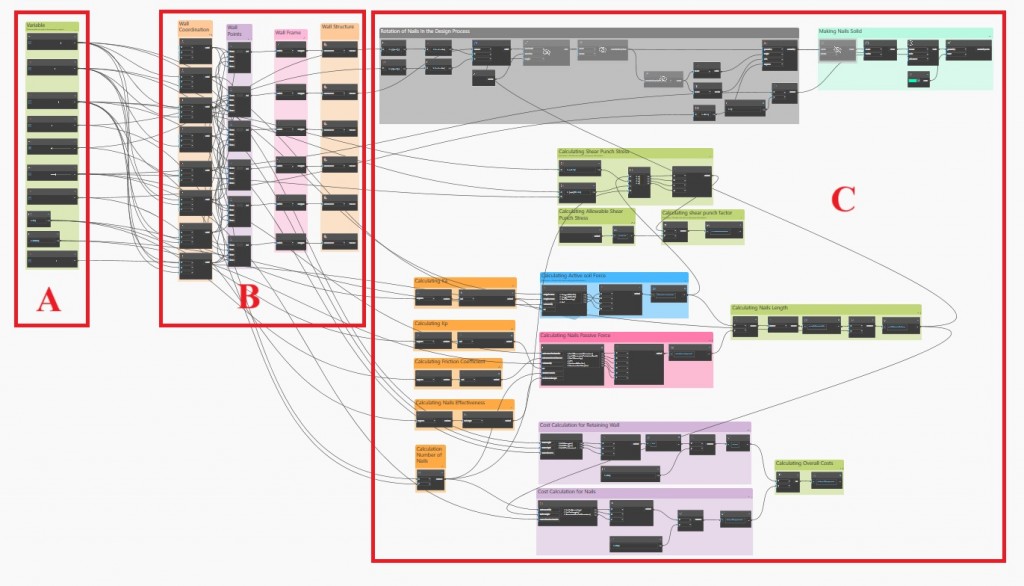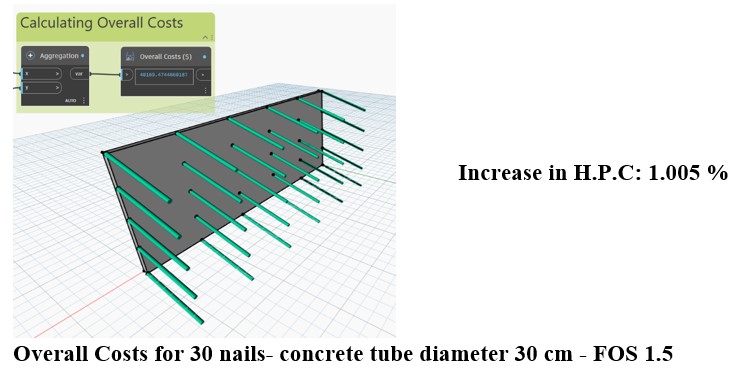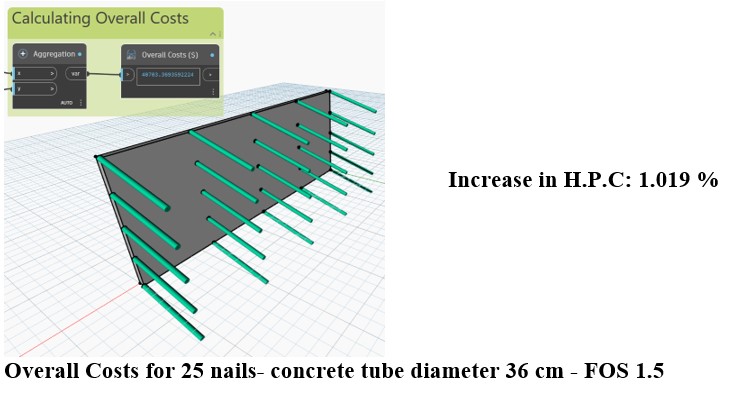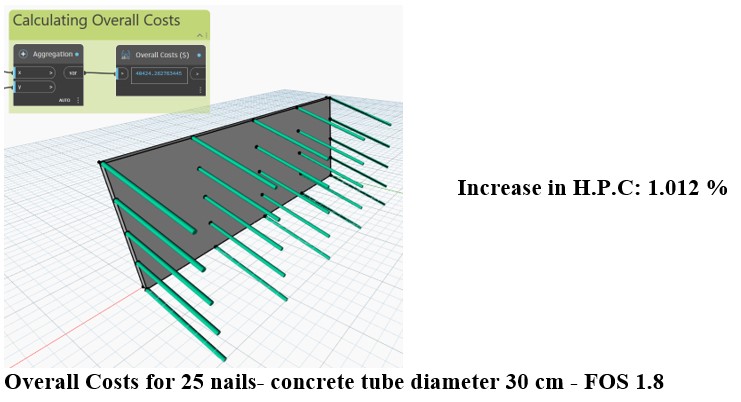Design Challenge
The design challenge for this study would be the stability of the nailed retaining wall while controlling the shear punch which takes into account desired site conditions. For the nailed retaining wall to have the best possible design, a number of factors must be carefully taken into account. A design should strike a balance between things like cost effectiveness and functionality.
High Performance Criteria
Dynamo and the parameters you have chosen can generate design possibilities that may or may not work in practice when it comes to combining different forms and sizes. As a result, several High Performance Criteria (HPC) can be used to assess how well the resulting design has been implemented.
The two HPCs selected for this study are described below:
- Functionality
In nailed retaining wall design, functionality as a high-performance criterion relates to effective, precise, and adaptable design procedures. Fast parameter changes, precise analysis, adaptability to intricate geometries, smooth software integration, intuitive user interfaces, and scalability to accommodate big projects are all examples of this. These guarantee simplified design, adherence to safety regulations, and cost savings. - Cost Effectiveness
When designing nailed retaining walls, cost-effectiveness as a high-performance criterion means maximizing utility while minimizing costs. This entails choosing affordable building materials, utilizing effective design strategies, performing lifespan cost analyses, putting cost-effective construction methods into practice, proactively controlling risks, and incorporating sustainable principles. Setting cost-effectiveness as a top priority guarantees the best project results within financial limitations.
Design Parameters
There is an extensive framework for choosing the variables that influence the overall model design. These are called design parameters in this study which are selected to show a vertical reinforced concrete wall with rebar nails covered in concrete tube, effected by the active pressure of a dry, non-cohesive soil. These design parameters can be seen below:
Parametric Model Description
To generate the Nailed Retaining Wall, a parametric model is created using Dynamo BIM and the given design parameters. Three major groups (A, B, and C) comprise the Dynamo script; these will be discussed in more detail later on. The dynamo script is displayed as follows:
Group A includes the design parameters discussed above that can be altered to achieve different design. Group B basically is responsible for generation of wall structure. Group C is responsible for creating the nails. However, for this many calculations are done to calculate the length of the nails accordingly. Furthermore, High Performance Criteria calculation are also a part of this group.
Design Alternatives
Three design alternatives have been presented as seen below:
Parametric Model
References
Karthikeyan, A., & December, S. A. (2017). A Case Study on Soil-Nailed Retaining Wall in Hilly Area. In Indian Geotechnical Conference, Geo-NEst (pp. 14-16)
Taib, S. N. L. (2010). A Review of Soil Nailing Design Approaches. Journal of Civil Engineering, Science and Technology, 1(2), 1-6
Hossain, M. A., & Islam, A. (2016). Numerical analysis of the effects of soil nails on slope stability. International Journal of Computer Applications, 141(8), 12
Terzaghi, K. (1943). Theoretical soil mechanics.
تحریریه مهندسین ایران, & محسن پاکان فهرست بهای 1402: تمامی رشته ها با فرمت PDF. پورتال جامع مهندسین ایران. https://www.pjmi.ir/fehrestbaha-1402-pdf/
American Concrete Institute. Metric Building Code Requirements for Structural Concrete (ACI 318M-19) and Commentary. ACI 2019.




